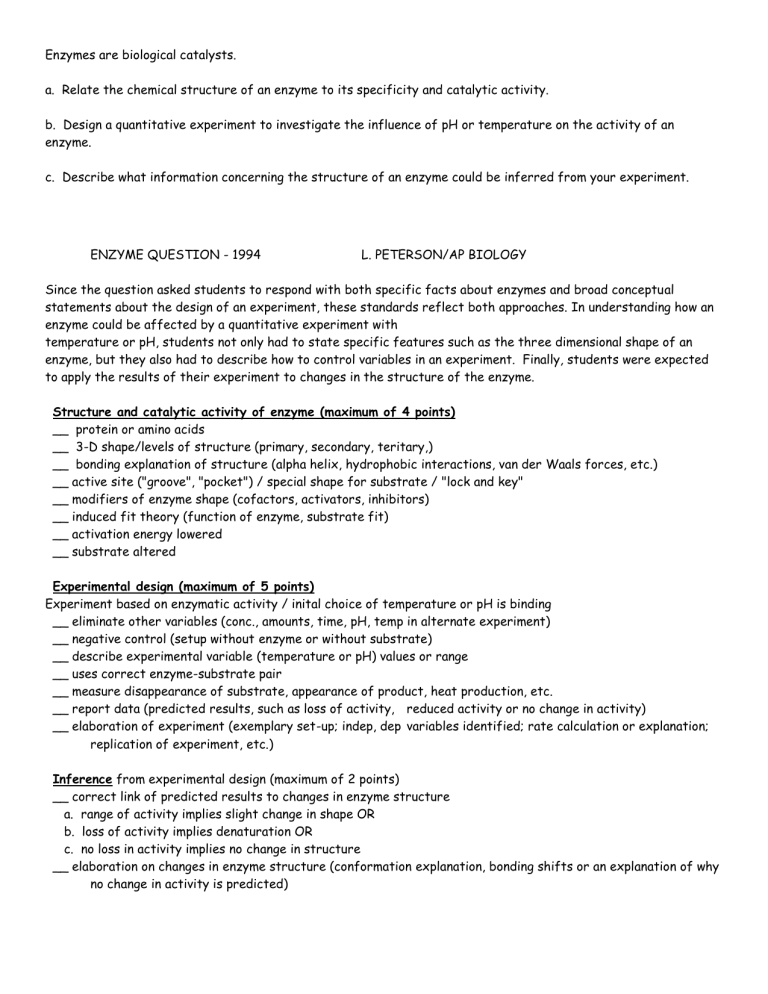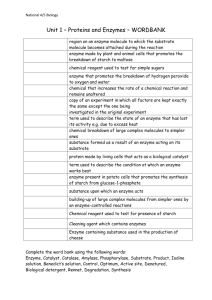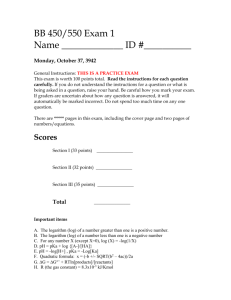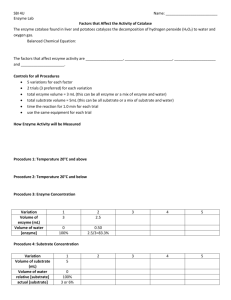Enzymes

Enzymes are biological catalysts. a. Relate the chemical structure of an enzyme to its specificity and catalytic activity. b. Design a quantitative experiment to investigate the influence of pH or temperature on the activity of an enzyme. c. Describe what information concerning the structure of an enzyme could be inferred from your experiment.
ENZYME QUESTION - 1994 L. PETERSON/AP BIOLOGY
Since the question asked students to respond with both specific facts about enzymes and broad conceptual statements about the design of an experiment, these standards reflect both approaches. In understanding how an enzyme could be affected by a quantitative experiment with temperature or pH, students not only had to state specific features such as the three dimensional shape of an enzyme, but they also had to describe how to control variables in an experiment. Finally, students were expected to apply the results of their experiment to changes in the structure of the enzyme.
Structure and catalytic activity of enzyme (maximum of 4 points)
__ protein or amino acids
__ 3-D shape/levels of structure (primary, secondary, teritary,)
__ bonding explanation of structure (alpha helix, hydrophobic interactions, van der Waals forces, etc.)
__ active site ("groove", "pocket") / special shape for substrate / "lock and key"
__ modifiers of enzyme shape (cofactors, activators, inhibitors)
__ induced fit theory (function of enzyme, substrate fit)
__ activation energy lowered
__ substrate altered
Experimental design (maximum of 5 points)
Experiment based on enzymatic activity / inital choice of temperature or pH is binding
__ eliminate other variables (conc., amounts, time, pH, temp in alternate experiment)
__ negative control (setup without enzyme or without substrate)
__ describe experimental variable (temperature or pH) values or range
__ uses correct enzyme-substrate pair
__ measure disappearance of substrate, appearance of product, heat production, etc.
__ report data (predicted results, such as loss of activity, reduced activity or no change in activity)
__ elaboration of experiment (exemplary set-up; indep, dep variables identified; rate calculation or explanation; replication of experiment, etc.)
Inference from experimental design (maximum of 2 points)
__ correct link of predicted results to changes in enzyme structure
a. range of activity implies slight change in shape OR
b. loss of activity implies denaturation OR
c. no loss in activity implies no change in structure
__ elaboration on changes in enzyme structure (conformation explanation, bonding shifts or an explanation of why no change in activity is predicted)











